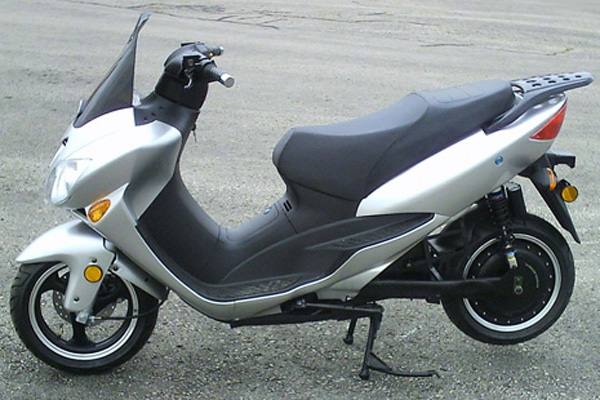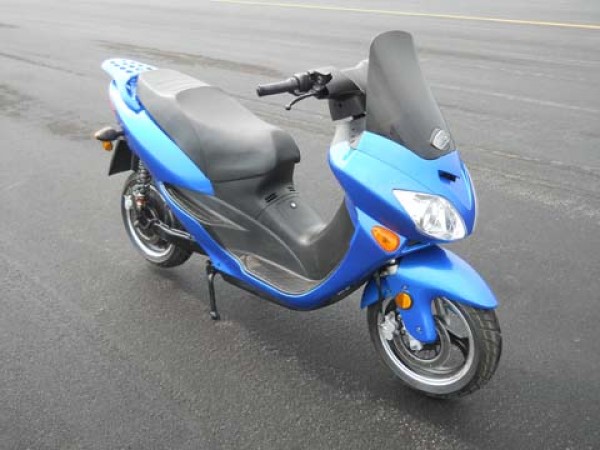High-performance electric vehicles (EV) generally grab the headlines, since the idea of an EV going fast is still enough of a surprise that the people tend to sit up and take notice when one comes along.
Even so, while souped-up EVs stir up plenty of online chatter this doesn’t often translate to sales. Largely because making a high-performance EV remains an expensive business. Hence automaker Z Electric Vehicle’s (ZEV) latest model of scooter, the ZEV 5000.

The launch of the 5000 seems on the surface a step down for the automaker, which is better known for its high-performance rides. Most of their models enjoy a top speeds of 75 to 80 mph, and contain lithium batteries that give the scooter a range of 100 miles.
The 5000 can’t get up much beyond 60 mph and its non-exotic, lead-based battery gives the scooter a range of 50 miles, down to half that in heavy traffic.
ZEV said the new model is a response to economic hard times and the fact that disposable income is not what it was — though the scooter comes in at a not exactly giveaway price of $4,545, this is still considerably less than earlier ZEV models.
The company said the 5000 is also tailored to the habits of many urban bike riders. In a statement ZEV said: “For the vast majority of the population, their needs and use patterns could best be served by a new approach, rather than a new technology. The vast majority of the public needs a vehicle to commute to work less than 20 miles.”
“With the world economy not exactly booming, the intent was to try to create the maximum value product for the market and to drive down the sale price,” the automaker added.
Lead-based batteries have not always had the best reputation. This is in part because of reduced performance and a historical problem of plate sulfating based on the use of sulphuric acid.
ZEV said the plate sulfating issue had been resolved in their new batteries by replacing normal acid with an electrolyte of a liquid low sodium silicate compound. They said the new non-acid battery tended to have a quicker recharge time, bringing it on a par with lithium batteries. According to the company, they have also been able to increase battery capacity, pushing it up by 11.2 per cent in kilowatt-hour (kWh) capacity in the lead battery in just the last year.

Of course the biggest advantage of using lead-based batteries is cost. The 5000’s 72 volt nominal (84 volt peak) system has a capacity of 3.36 kWh and comes in at $600. The equivalent lithium system would cost about $1,750.
The scooter shares its hub motor design with other vehicles in the company line up. The motor can take continuous power to 8,000 watts and launch power to 16,000 watts, contributing heavily toward the range and efficiency of the 5000, which is also aided by the 3-speed “electronic transmission” controller used by ZEV.